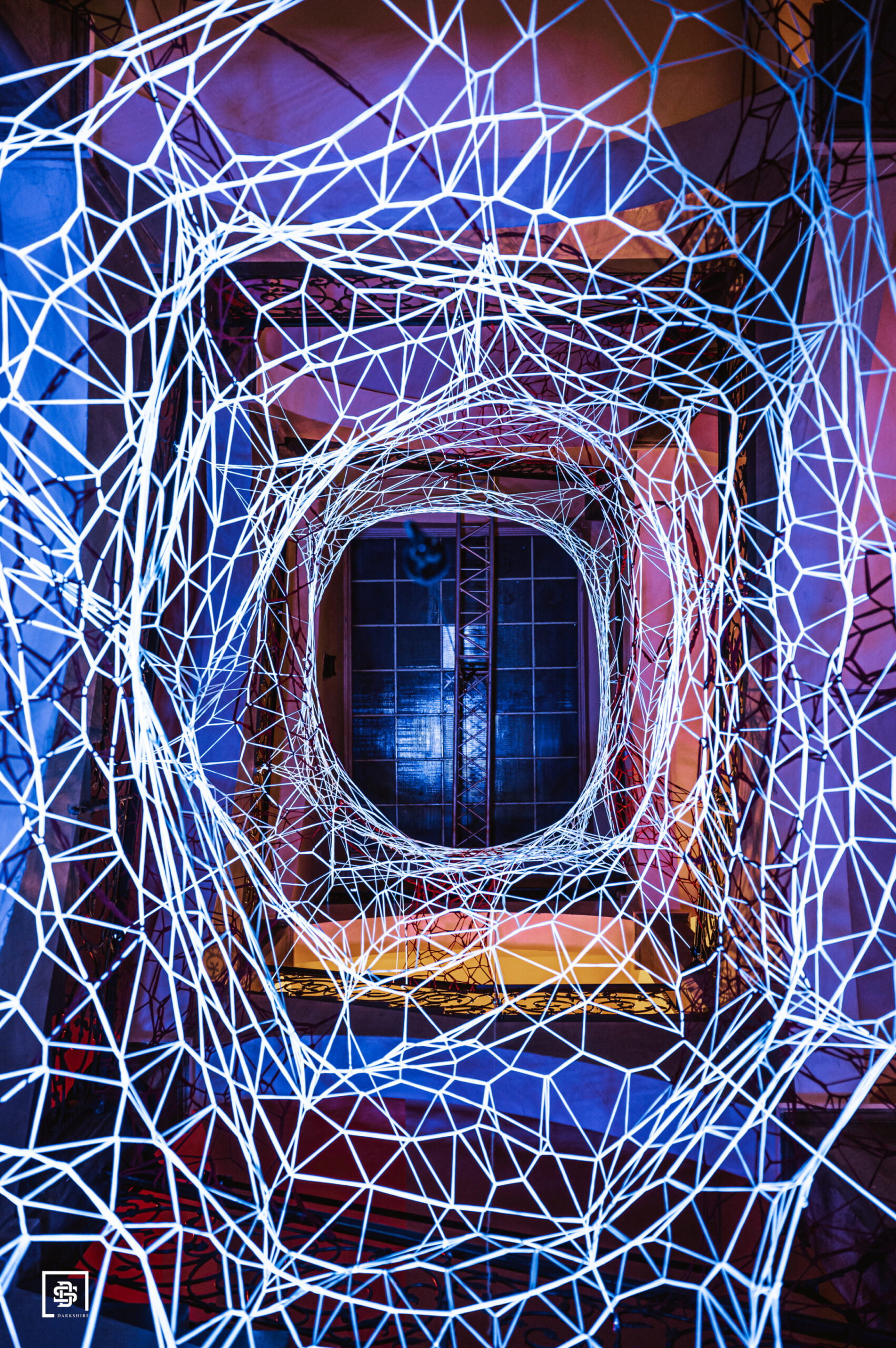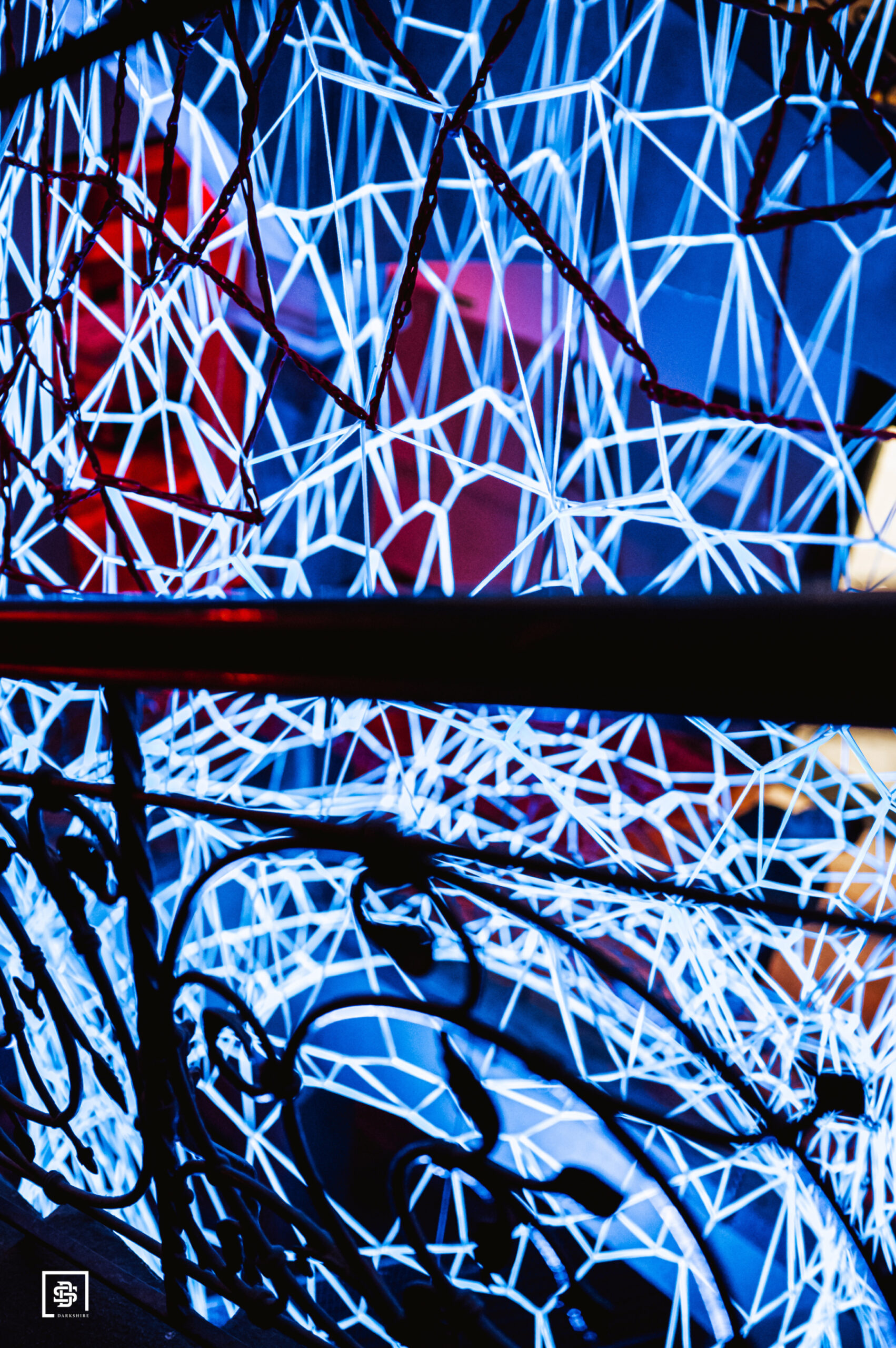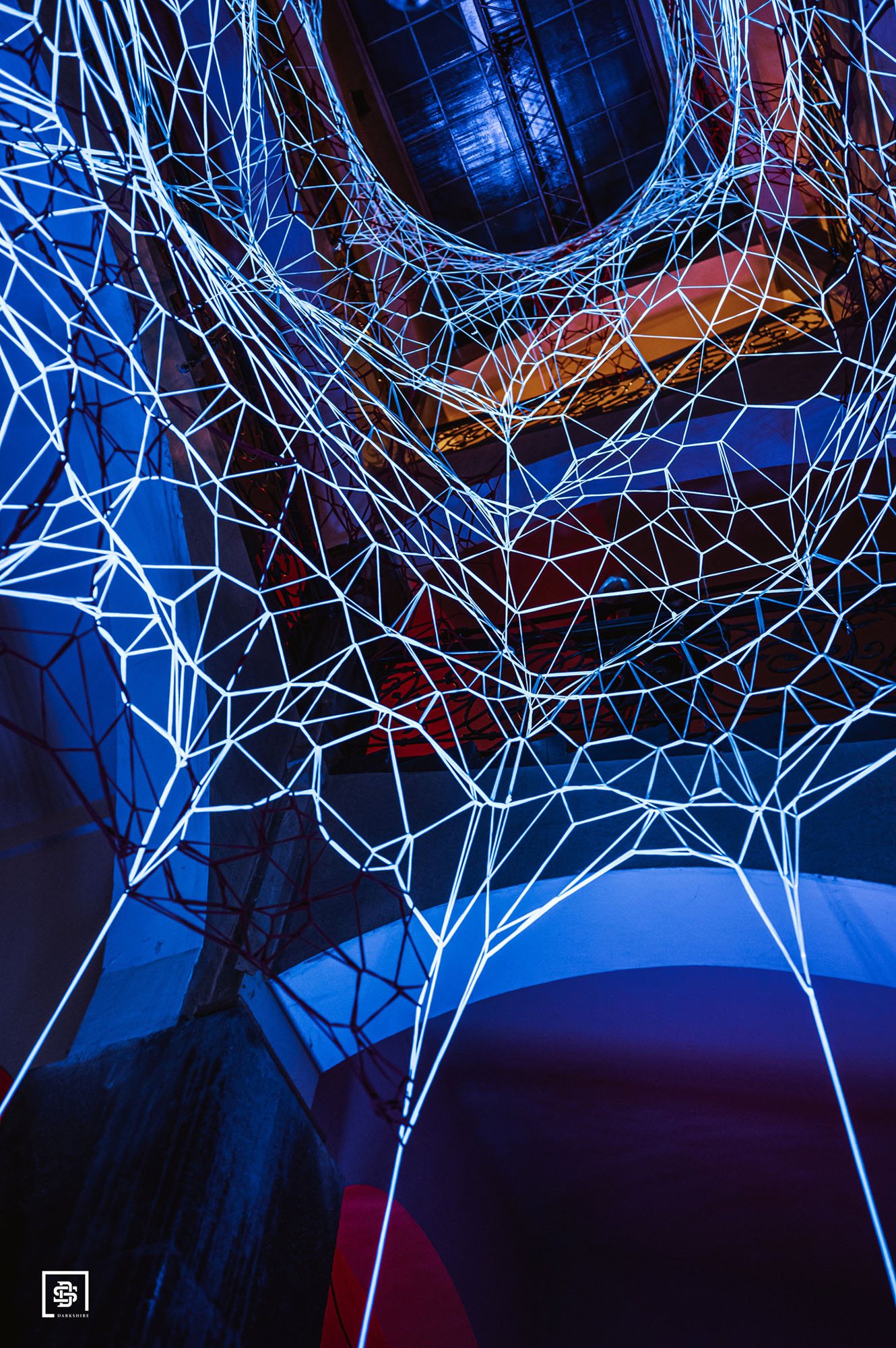The space of the former water tank on Žlutý kopec bears within its walls a silent memory of water – an element that was once stored here as a source of life for the entire city. The installation Memory of Water
seeks to reawaken this energy and symbolically return water to the water tower – not in its physical form, but through a visual and material metaphor.
An extensive network woven from recycled textiles floats in the space as a reminder of flow, connection, and cycle. Video mapping, which sets the structure in motion, creates the illusion of flowing
water – light becomes a medium of movement and change. The installation thus visually revives the memory of the place and tells the story of water as a silent but indispensable ally in our lives.
The ecological dimension of the work is also underlined by the choice of materials – the use of textile scraps and recycled fibers refers to one of the pressing issues of today: the unsustainability of the textile industry, which is one of the biggest polluters of water resources. This makes the installation not only a visual experience, but also a silent call for greater gratitude, respect, and responsibility towards water.
Eliška Kvíčalová is a multidisciplinary artist working at the intersection of fine art, design, scenography, and handicrafts. In her work, she connects materials, ideas, spaces, and people—sensitively, thoughtfully, and with an emphasis on inner meanings.
Her work stands at the intersection of aesthetics, poetry, and physical contact with materials. She works with natural materials, often using textile techniques, hand-crocheting jute and recycled fabrics, and weaving wicker. This results in organic structures reminiscent of mycelium, neural networks, or the invisible relationships between humans and their environment.
For her, each object is not only a visual element, but also a subtle invitation to perception—to become aware of the fragile connections that surround us.
In addition to her own work, she collaborates with other artists on shared installations and projects, which she sees as a natural extension of her approach. This creates places with a strong atmosphere—spaces for pause, quiet, sensory perception, and inner resonance.
Her works appear at festivals, in galleries, museums, and public spaces. She is constantly searching for new ways to express the interconnectedness of the world through material, form, and collaboration—an interconnectedness that is invisible yet present and deeply moving.


